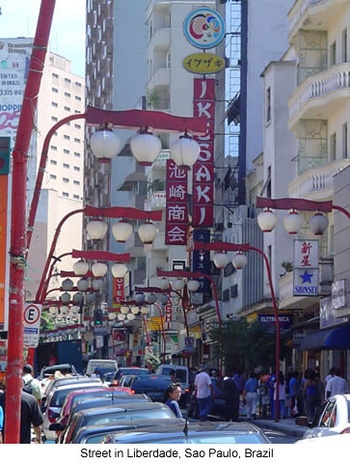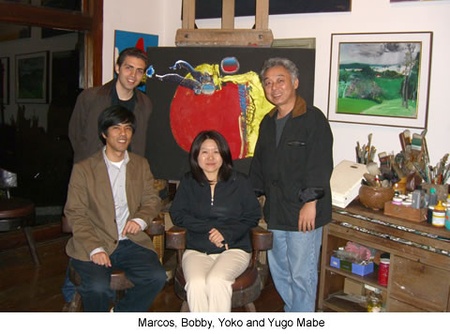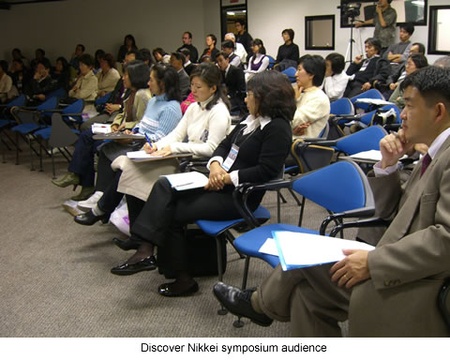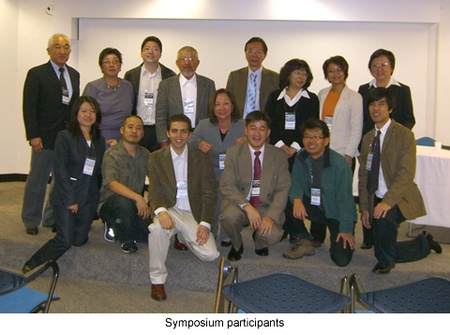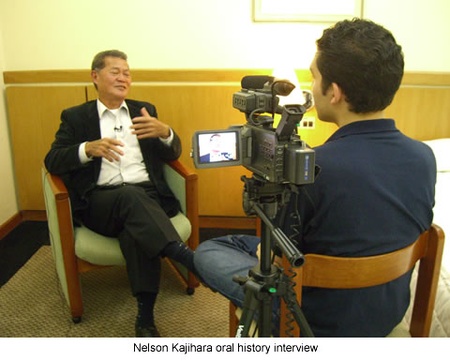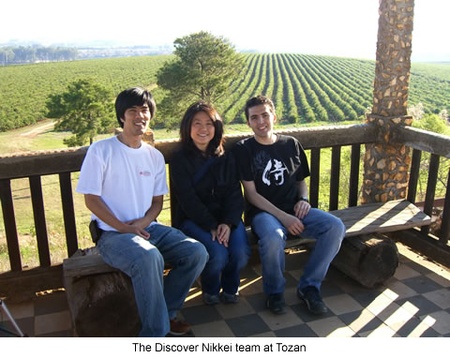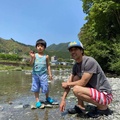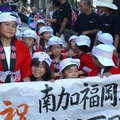2008 marks the centennial of Japanese immigration to Brazil. On June 18, 1908, 793 people aboard the Kasato-maru arrived at the port of Santos to start a new life in a new land. For the 1.5 million Brazilians of Japanese ancestry today, the Kasato-maru is their Mayflower and a symbol of their history and identity.
The centennial was celebrated both in Brazil and Japan. In Brazil, Japanese culture was literally paraded down the streets as part of Carnaval. Dancers dressed in samurai and geisha costumes moved to the rhythm of the samba in front of a giant Kasato-maru parade float. Later, in the summer, the official centennial celebration was marked with a weeklong series of events topped by a visit by the Crown Prince of Japan.
In Japan, the NHK television channel aired a dramatic series about Japanese immigrants in Brazil called “Haru to Natsu.” They also released a commemorative 500-yen coin with, what else but the image of the Kasato-maru on one side.
But beyond all the festivals and TV shows and international exchange, the 100th anniversary gave good reason for examining the achievements of Japanese Brazilians and their contributions to Brazilian society as well as the struggles they had to overcome.
Discover Nikkei participated in the centennial by organizing a symposium in Sao Paulo on September 20, 2008. The symposium was titled, “100 Years of Japanese Immigration: The Multiple Identities of the Nikkei Community.” The event was a collaboration with some of our affiliate organizations in Brazil:
Sociedade Brasileira de Cultura Japonesa e de Assistência Social (Bunkyo) - Museu Histórico da Imigração Japonesa no Brasil
Associação Brasileira de Estudos Japoneses
We planned to explore three perspectives: Nikkei contributions to agrobusiness, Japanese Brazilian art, and Brazilians migrant workers in Japan known as dekasegi.
Two Discover Nikkei team members, Yoko Nishimura, the program coordinator, and myself took the 12-hour flight down to Brazil for the symposium. We stayed in Sao Paulo’s Japantown called Liberdade.
Liberdade is a lively community. It is an older neighborhood near the heart of the metropolis of 10 million—a mix of small businesses and urban residences with its own metro station. You can tell you are in Liberdade by the iconic red pole-Chinese lantern streetlights. Liberdade is also home to the Japanese immigration museum and other community organizations.
Of course, any Japantown will have a choice of Japanese restaurants. At dinner one night I discovered that in Brazil they don’t put avocado in their California roll. They use mango instead. To which I asked our hosts, “Why don’t you call it a Brazil roll?”
We arrived a day early to finalize the planning for the symposium with our partners in Sao Paulo. But, part of our trip was to reach out to other people in the Nikkei community, so we scheduled a meeting with Yugo Mabe, the son of a famous Japanese Brazilian abstract artist, Manabu Mabe. The younger Mabe is overseeing the construction of a new modern art museum called Museu de Arte Moderna Nipo-Brasileira Manabu Mabe. It will be located in Liberdade.
The Mabe residence was like a museum itself; every wall in almost every room was decorated with art. I walked away excited about the possibility of a Japanese American-Japanese Brazilian art exchange in the future.
The symposium was held at the Japan Foundation offices a short taxi ride from Liberdade. For the first panel on agrobusiness, the speakers came from outside of Sao Paulo (Sao Paulo is home to the largest population of Japanese Brazilians). We decided on this topic because we were interested in hearing the stories of the smaller, agricultural communities in Brazil. Like in California, the Japanese immigrants helped build the agriculture business of Brazil.
The second panel on art featured the work of various Japanese Brazilian artists. The panelists also discussed Nikkei identity as expressed through art.
The afternoon panel on dekasegi was broken up into two sections. Dekasegi have been migrating to and from Japan since the late 1980s to fill the labor shortages in Japanese factories. Today there are roughly 300,000 living in Japan.
The first part looked at the life of Brazilian workers in Japan. Most notably, it was pointed out how over time, the Japanese Brazilians have formed their own communities that retain their Brazilian culture.
The second part on dekasegi examined the adjustments of Japanese Brazilians who returned to Brazil. Many of the migrants are temporary workers who return home after their contracts expire. Especially hard hit are the children of the workers who must adjust to a different language and culture.
An interesting discussion arose regarding the actual term “dekasegi.” The original Japanese word means “temporary worker.” Some found the term offensive because temporary workers are commonly viewed as having a poor background and so looked down upon by Japanese society. They worried that by keeping the use of the word "dekasegi," it would perpetuate the image of Japanese Brazilians as lower class. Others though accepted the term because of its common use. It is effective as a label that is associated with a group of people and is negative only when used in a negative way.
For me, the best part of the symposium was meeting people from the community. Since I know zero Portuguese, we communicated mostly through English or my broken Japanese. I met community leaders, university students and people generally interested in Nikkei identity. Since I was new to their history, the more that was revealed to me about their community and the life of Japanese Brazilians, the more I wanted to learn.
Actually, we share a lot in common. We both have a common cultural heritage. We both come from immigrants and forged a new life in a new land. We both want to preserve our histories and explore our identities. But not all is alike—down in Brazil, they have names like Anacleto Hanashiro and Flavia Sakai—I really go a kick out of their names. I didn't get to meet everyone, but in total, over 100 people attended the Discover Nikkei event.
In addition to the symposium, we were able to sit down with six Japanese Brazilians for oral history video interviews in Portuguese and Japanese. One of the interviews was unscheduled. Nelson Kajihara attended the symposium and during the question and answer session revealed such an interesting life that we asked him for an interview. He grew up in the Amazon and in the 1990s lived in Japan as dekasegi with his wife and children. His interview and the others will be posted on the Real People section of Discover Nikkei.
For our last full day in Brazil, we visited the Tozan coffee plantation located a little over an hour’s drive outside of Sao Paulo. Fazenda Tozan was operated as an agricultural lab by the Mitsubishi Corporation prior to World War II. Today it still produces coffee but is facing the inevitable encroachment of urbanization. We made the special trip out to Tozan because it was used as a location for the filming of NHK drama, “Haru to Natsu.” I highly recommend watching the drama if you would like to see what it was like for the Japanese pioneers in Brazil.
Our trip was short, but we made many strong connections with the Nikkei community in Brazil and will be tapping into this resource to get more stories and articles for Discover Nikkei. There are many people to thank for making the symposium a success, especially our partners in Brazil. But I want to personally acknowledge the hard work and dedication of Marcos Persici who laid much of the groundwork, was our guide to Brazil and translated for us. Obrigado!
© 2008 Bobby Okinaka



